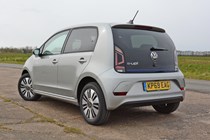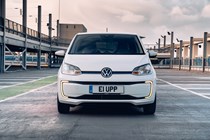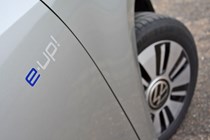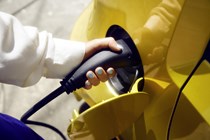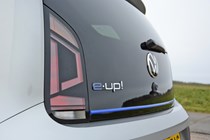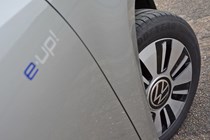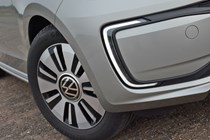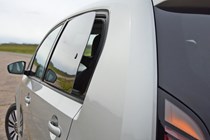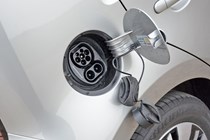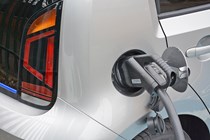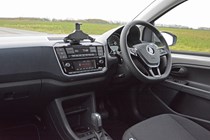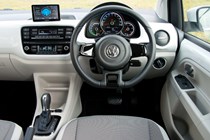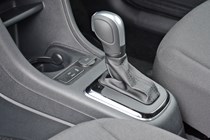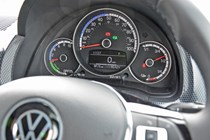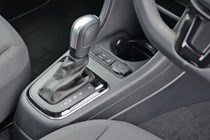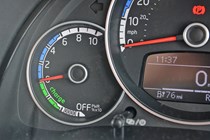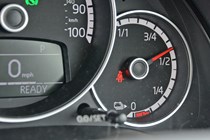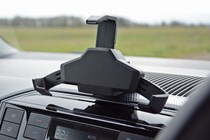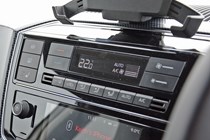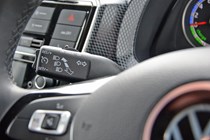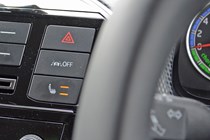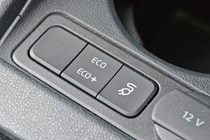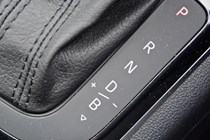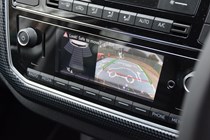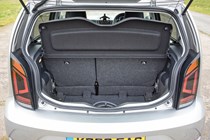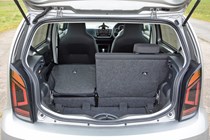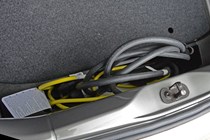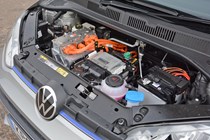
Volkswagen e-Up Hatchback (2014-2022) running costs and reliability
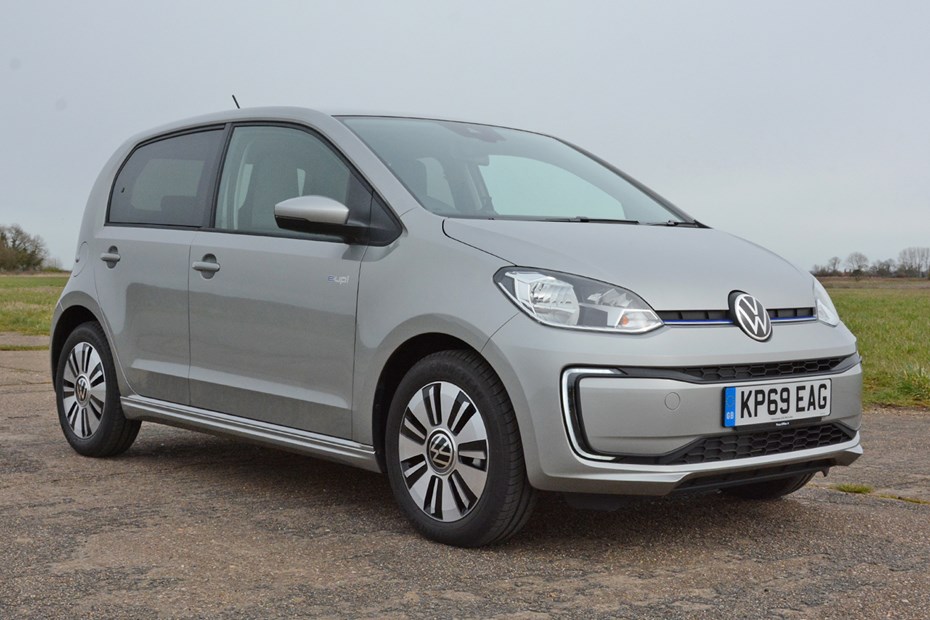
Miles per pound (mpp) ⓘ
| Electric motors, home charging | 12.6 - 15.6 mpp |
|---|---|
| Electric motors, public charging | 6.8 - 8.4 mpp |
Fuel economy ⓘ
| Electric motors | 4.3 - 5.3 miles/kWh |
|---|
- Claimed 161-mile range on a full charge
- Very low running costs in all regards…
- But it’s expensive to buy initially
Yes, other small cars such as Renault Zoe, with its 250-mile claimed range, easily trump the latest e-Up’s 161-mile figure, but given the VW’s aimed at city living, that’s not going to be much of a hindrance. In the real world, depending on individuals’ driving styles and weather conditions, that could dip to 140 miles or be higher than 170.
Being a fully electric car, the e-Up itself produces no CO2 to drive, but unless you’re recharging it using renewables, it’s inevitable some will be released in the process of the batteries being replenished. Still, that headline figure of 0g/km of CO2 means that under the current rules it’s VED car tax-free and buyers receive £3,000 from the government in the form of the Plug-in Car Grant when the e-Up’s purchased.
Driving modes and recuperation
It’s commonplace these days for cars to have different driving settings, and the e-Up’s packed with them.
With three specific driving modes – controlling the accelerator responsiveness and air-con primarily, Normal is the one for maximum acceleration. Switching to Eco dulls the responses and makes the air-con less effective, while with Eco+ it’s off altogether – best save this for when you’re eking every last gasp from the battery.
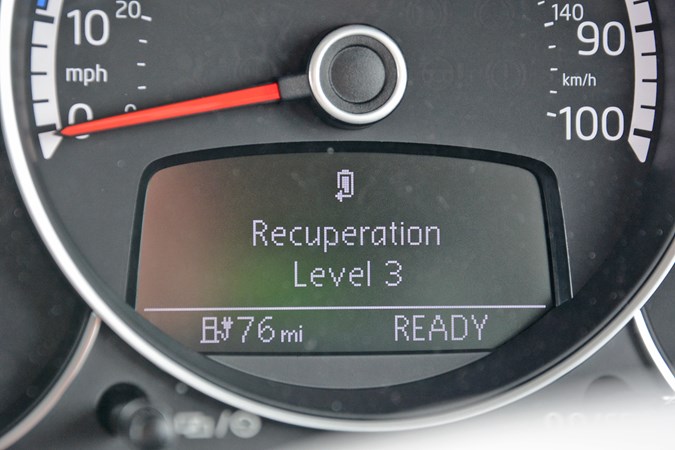
Additionally, using the gearlever rather than paddles behind the wheel, you can vary the brake energy recuperation levels between four settings. In its weakest setting lifting off the accelerator pedal will have a very gradual slowing down effect, but slot it into B – for Braking – and it’s much more dramatic. Learn to use it well and essentially you can drive it one-pedalled, barely using the brake pedal at all. Compared with exising, sophisticated systems as found on the BMW i3 and Nissan Leaf, it works effectively, but it’s worth noting that even in B mode, the braking is not sufficiently strong enough to warrant activitating the brake lights at the back.
VW e-Up recharging
For those rare occasions when you need to recharge the car using a conventional three-pin plug, expect the Volkswagen to be hooked-up for 13-16 hours before the batteries are back up to 100%, making a dedicated 7kW wall box all the more appealling.
Use one of those and it’s slashed down to a much more convenient four hours.
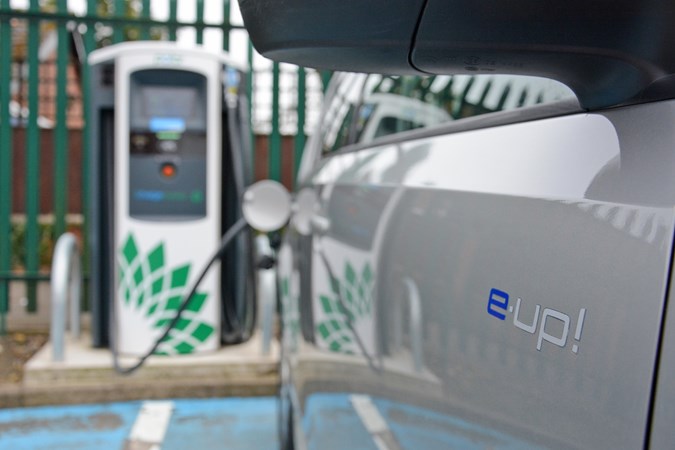
Public charging points will remain the quickest option, but be conscious that the quickest rate the e-Up recharges is 40kWh, so don’t waste time hunting out a fancy 150kWh charge point if there’s a 50kWh one free. The latter will work at the same speed. Using one of these will allow you to go from near-flat to 80% charged in around 40 minutes. Still longer than a petrol Up would take to refill, but handy enough if you’re caught short on a longer journey.
How reliable is the e-Up?
- Established car but newer electrical components
- Electric cars have fewer moving parts
- Covered by a three-year warranty
Petrol-powered Ups have proved as reliable as they are popular over the years, with only a handful of recalls as outlined in that model’s separate review. However, none of those recalls have been specific to parts on the e-Up, reflecting that fully electric cars are often more reliable than ones with conventional engines, primarily because there are fewer parts to go wrong.
With the newer, improved e-Up we’re not expecting any nasty surprises, either.
The car itself is backed-up by VW’s usual three-year/60,000-mile warranty, while the battery pack itself is covered for eight years or 99,360 miles, whichever comes soonest.
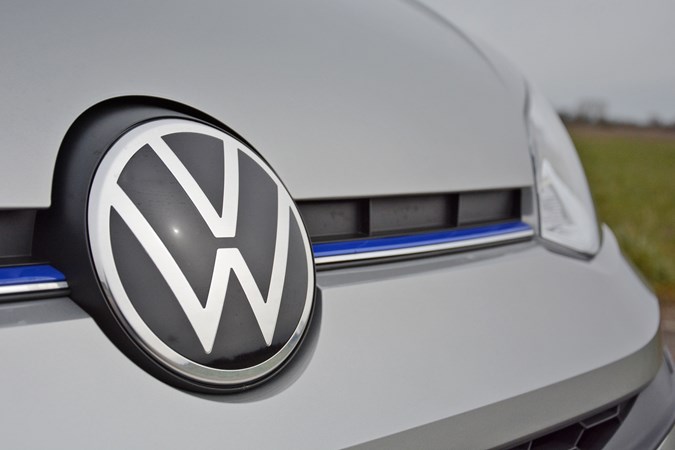
Ongoing running costs
| Road tax | £20 - £195 |
|---|---|
| Insurance group | 10 |
Get an insurance quote with

|
|




